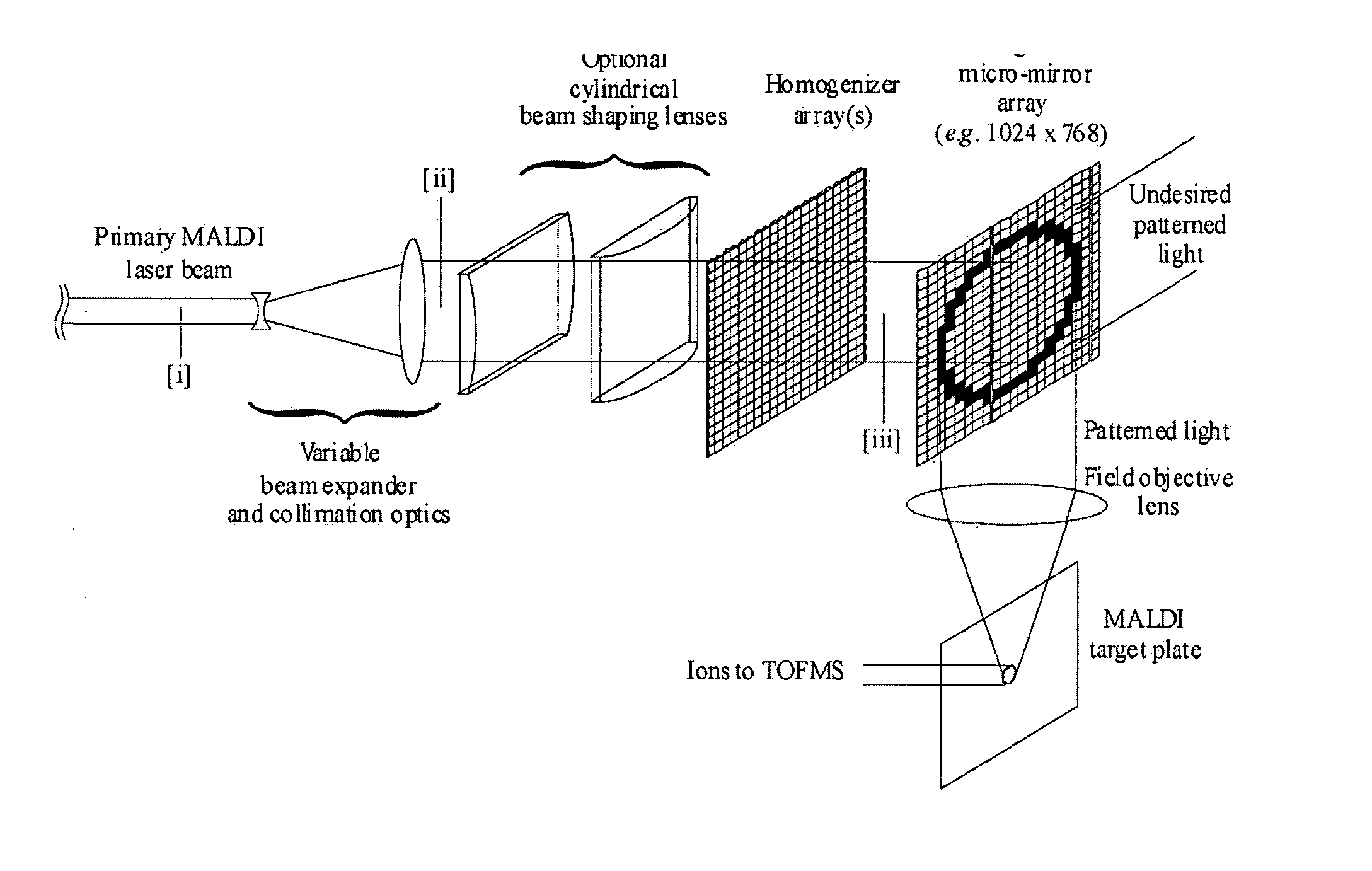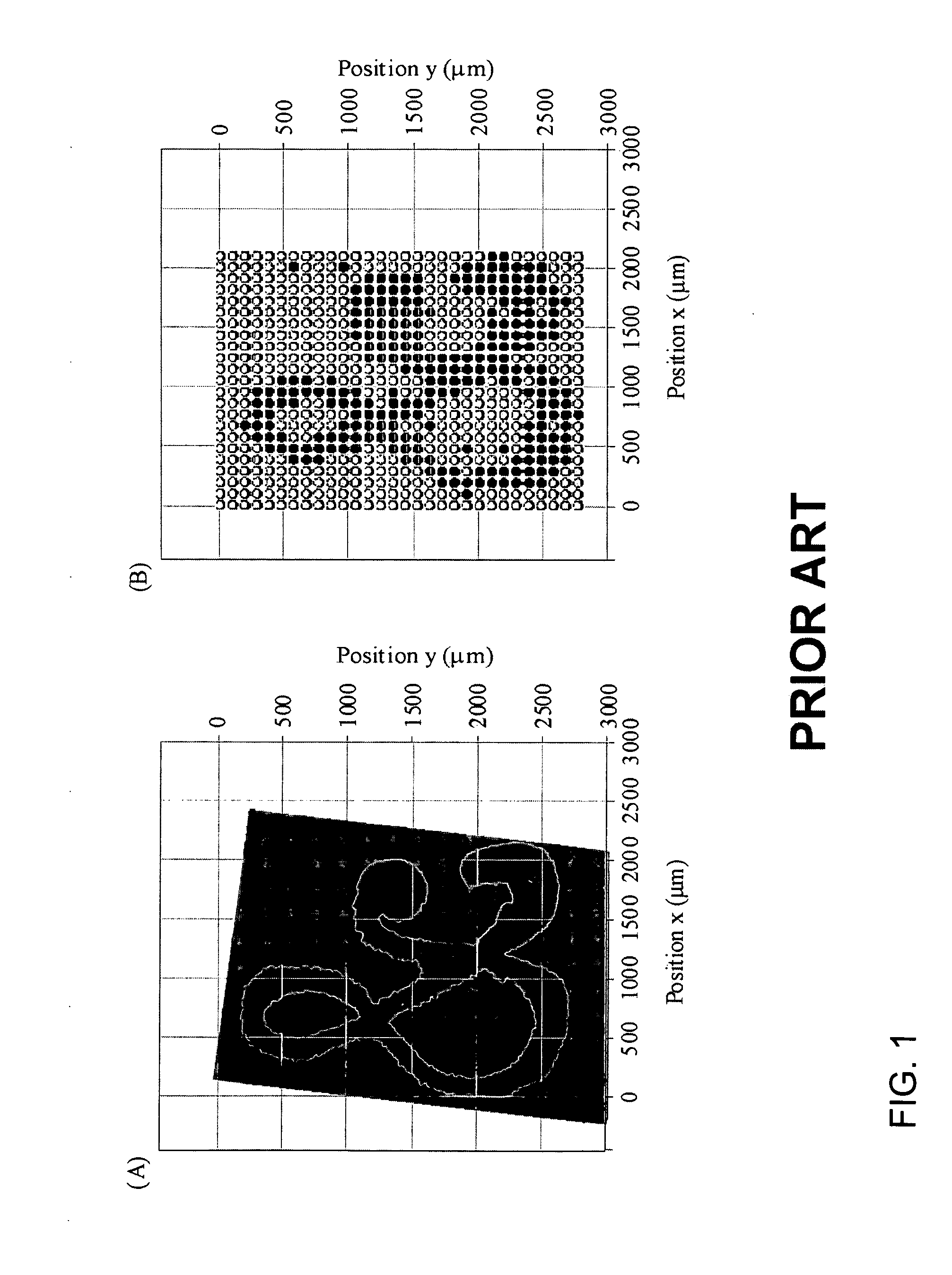Advanced optics for rapidly patterned laser profiles in analytical spectrometry
a laser profile and analytical spectrometry technology, applied in the field of mass spectrometry, can solve the problems of limiting both techniques, exceedingly challenging, and nsom techniques currently limited to generating symmetrical (typically round) spot shapes, and achieves rapid patterning, eliminate perspective foreshortening, and reduce the effect of nsom techniques
- Summary
- Abstract
- Description
- Claims
- Application Information
AI Technical Summary
Benefits of technology
Problems solved by technology
Method used
Image
Examples
Embodiment Construction
[0023] As used herein, “a” or “an” means one or more, unless otherwise indicated. The singular encompasses the plural and the plural encompasses the singular.
[0024] As used herein, the term “fluidly coupled”, with respect to two or more optical components refers to the flow of light or matter between the components, so that the light and / or matter output of one component is substantially the input of one or more other components.
[0025] As used herein, “inspecting” or “inspection”, in the context of performing work on a sample, is defined in its broadest terms, and includes, but is not limited to, inspection of the entire sample or the inspection of one or more selected portions or spatial regions of a sample. Although the term “inspection” may include both the sampling of material and the subsequent analysis of the sampled material, it also includes sampling of the material itself without any further chemical analysis. As an example, the laser desorption of part of a sample consti...
PUM
 Login to View More
Login to View More Abstract
Description
Claims
Application Information
 Login to View More
Login to View More - R&D
- Intellectual Property
- Life Sciences
- Materials
- Tech Scout
- Unparalleled Data Quality
- Higher Quality Content
- 60% Fewer Hallucinations
Browse by: Latest US Patents, China's latest patents, Technical Efficacy Thesaurus, Application Domain, Technology Topic, Popular Technical Reports.
© 2025 PatSnap. All rights reserved.Legal|Privacy policy|Modern Slavery Act Transparency Statement|Sitemap|About US| Contact US: help@patsnap.com



